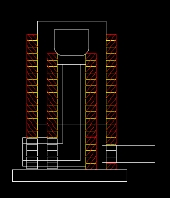

 5
5




Some places need to be wild

 6
6




For all your Montana Masonry Heater parts (also known as) Rocket Mass heater parts.
Visit me at
dragontechrmh.com Once you go brick you will never go back!
 5
5




Nothing is foolproof to a sufficiently patient fool!
I hate people who use big words just to make themselves look perspicacious.










 2
2




Some places need to be wild










 2
2




Some places need to be wild
 1
1








I make a Maple Syrup instructional movie! Check it out HERE
SKIP books, get 'em while they're hot!!! Skills to Inherit Property
See me in a movie building a massive wood staircase:Low Tech Lab Movie










 1
1




Some places need to be wild
 1
1




I make a Maple Syrup instructional movie! Check it out HERE
SKIP books, get 'em while they're hot!!! Skills to Inherit Property
See me in a movie building a massive wood staircase:Low Tech Lab Movie
 1
1





|
Time is mother nature's way of keeping everything from happening at once. And this is a tiny ad:
Learn Permaculture through a little hard work
https://wheaton-labs.com/bootcamp
|






